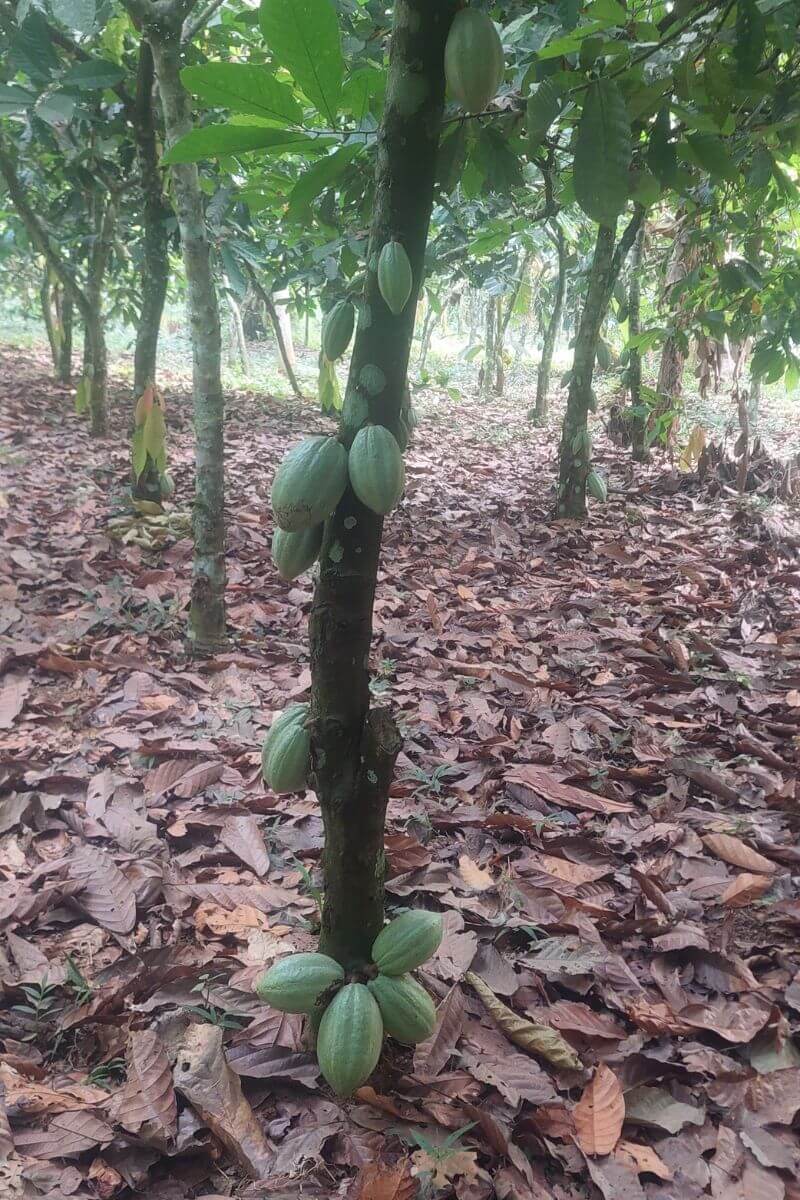LAWRENCE, Kan. — Chocolate, the beloved treat that brings joy to millions, is facing a world-changing threat. A rapidly spreading virus is attacking the cacao trees that provide the essential ingredient for our favorite indulgence, putting the global chocolate supply at risk. However, a team of researchers is fighting back, armed with an unlikely weapon to save chocolate: math.
The cacao swollen shoot virus disease (CSSVD) is a devastating pathogen that can cause harvest losses of 15 to 50 percent in affected cacao trees. The virus is spread by small insects called mealybugs, which feed on the leaves, buds, and flowers of the trees. The impact is particularly severe in West Africa, where about half of the world’s chocolate originates. In Ghana alone, more than 254 million cacao trees have been lost in recent years due to this virus.
“This virus is a real threat to the global supply of chocolate,” warns Benito Chen-Charpentier, professor of mathematics at The University of Texas at Arlington and co-author of the new study published in the journal PLoS ONE. “Pesticides don’t work well against mealybugs, leaving farmers to try to prevent the spread of the disease by cutting out infected trees and breeding resistant trees. But despite these efforts, Ghana has lost more than 254 million cacao trees in recent years.”
Imagine a world without chocolate. No more comforting hot cocoa on a cold day, no more delightful chocolate bars as a mid-day treat, and no more decadent desserts to celebrate special occasions. This is the potential future we face if CSSVD continues to spread unchecked.

There is hope to save chocolate. Farmers can combat the mealybugs by vaccinating their cacao trees against the virus. However, this solution comes with its own set of challenges. The vaccines are expensive, especially for low-wage farmers, and vaccinated trees produce a smaller harvest of cacao. It’s a bitter pill to swallow for farmers already struggling with the devastating effects of the virus.
This is where Chen-Charpentier and his colleagues from the University of Kansas, Prairie View A&M, the University of South Florida, and the Cocoa Research Institute of Ghana come in. They’ve developed a new strategy that uses mathematical data to optimize the vaccination process, helping farmers protect their crops while minimizing costs and harvest losses. The key lies in understanding how mealybugs spread the virus.
“Mealybugs have several ways of movement, including moving from canopy to canopy, being carried by ants or blown by the wind,” explains Chen-Charpentier. “What we needed to do was create a model for cacao growers so they could know how far away they could safely plant vaccinated trees from unvaccinated trees in order to prevent the spread of the virus while keeping costs manageable for these small farmers.”
The research team experimented with different mathematical patterning techniques, developing two types of models that allow farmers to create a protective layer of vaccinated cacao trees around their unvaccinated trees. These models take into account factors like the delay between when a tree is infected and when it starts showing symptoms, as well as the inherent randomness in how diseases spread in the real world.


By comparing their model predictions to real-world data from cacao farms in Ghana, the researchers were able to fine-tune their models and demonstrate their effectiveness.
“While still experimental, these models are exciting because they would help farmers protect their crops while helping them achieve a better harvest,” says Chen-Charpentier. “This is good for the farmers’ bottom line, as well as our global addiction to chocolate.”
In the grand scheme of things, this research is about more than just satisfying our sweet tooth. Cacao is a vital cash crop for many countries in West Africa, and the livelihoods of countless farmers depend on its successful cultivation. By providing these farmers with tools to combat CSSVD effectively and affordably, this research offers a glimmer of hope in a bitter situation.
So, the next time you unwrap a chocolate bar, take a moment to appreciate not just the delicious treat but also the hard work and innovative thinking that goes into ensuring its continued existence. In the face of a global chocolate crisis, these researchers are proving that sometimes, the solution to our most pressing problems can be found in the abstract world of mathematical models.
As Chen-Charpentier puts it, “This is good for the farmers’ bottom line, as well as our global addiction to chocolate.” And that’s a sweet thought indeed.

